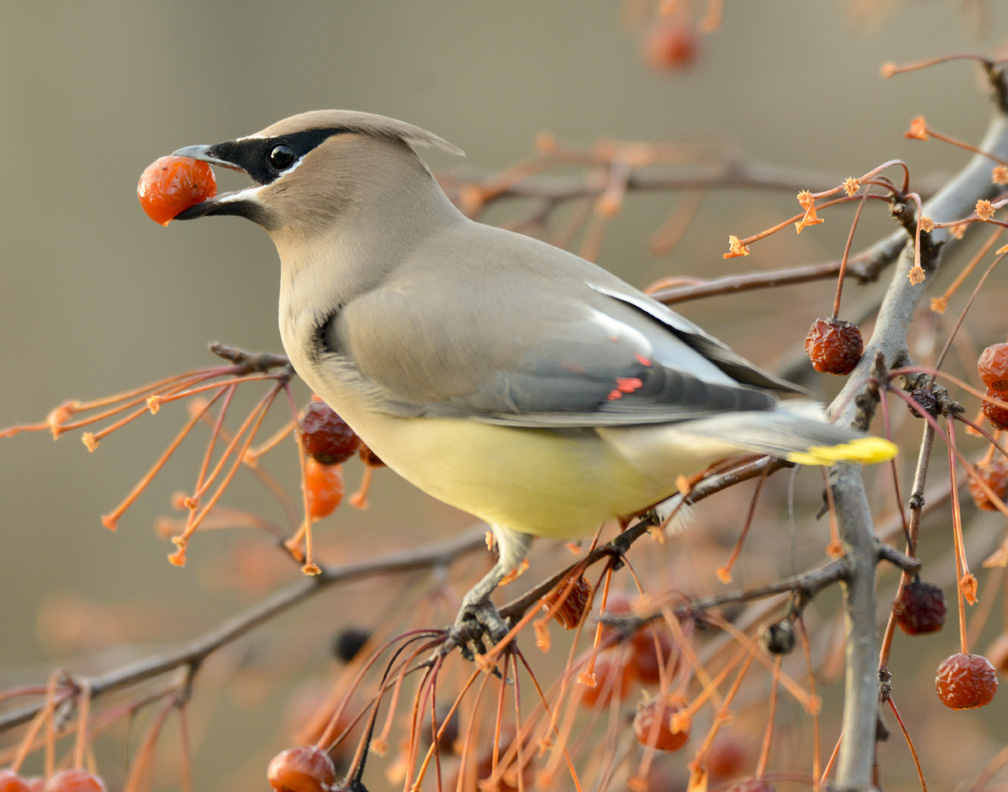
One of the best way to bring migrating birds to your yard during fall migration is to provide fruiting shrubs and vines. Berries help fuel their migration and provide necessary fat and protein to fend off adverse weather.
However, not all berries are created equal. Native shrubs produce fruits with fat ranging from 6.57% to 48.72%. This also correlates to high energy content ranging between 18.83 and 28.68 kJ/G. Compare this to invasive Eurasian species that have fat content less than 1% and energy content no greater than 17.17 kJ/g. Additionally the fruits higher in fat and energy have shown to be consumed by birds at rates higher than the fruits of the invasive species. What this means is native berries give birds the calories necessary to complete their migratory journey whereas non-native shrubs do not supply sufficient amounts of energy and can put migratory songbirds in peril by not meeting their nutritional needs. Here are some comparisons of the fat and energy contents of native and non-native, invasive berries:
| Common Name | Botanical Name | Native ? | Ave. Fat content | Ave. Energy content |
| Multiflora Rose | Rosa multiflora | No | 0.99% | 17.17 kJ/g |
| Japanese Honeysuckle | Lonicera spp. | No | 0.70% | 16.22 kJ/g |
| Snowball Tree/Cranberry Bush | Viburnum opulus | No | 0.86% | 16.73 kJ/g |
| Grey Dogwood | Cornus racemosa | Yes | 34.90% | 27.16 kJ/g |
|
Arrowwood Viburnum |
Viburnum dentatum | Yes | 48.72% | 28.06 kJ/g |
| Spicebush | Lindera benzoin | Yes | 48.01% | 28.61 kJ/g |
Choose native shrubs that produce fat and energy rich fruit such as Arrowwood Viburnum, Spicebush, Grey and Rough-leaf Dogwood and provide a refueling buffet for migratory songbirds. These plants will also provide food for young nestlings during the breeding season. Viburnums host the intriguing Saddleback caterpillar. Viburnums and Dogwoods both host Spring Azure butterflies. Spicebush hosts the adorable Spicebush Swallowtail caterpillar. Most nesting birds in North America feed their young caterpillars during their high growth period.
These native shrubs feed songbirds throughout the season and are a wonderful addition to any landscape.
-Mary Nemecek, Conservation Chair
